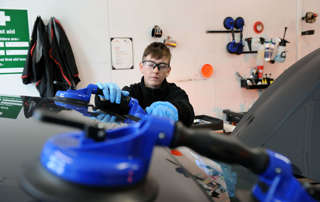As Britain gets used to the clocks going back, a new road safety study has revealed the accident risk for pedestrians could treble as a number of local authorities consider turning off street lights.
A report from Autoglass and conducted by road safety expert Dr Nick Gkikas compared fatalities in areas with similar surroundings, but where the road lighting was either poor or where it was adequately in place. It found that switching off road lights seriously compromises road safety for motorists, with drivers struggling to see pedestrians or cyclists in the dark.
The report highlighted that the high involvement rate of pedestrians and cyclists in accidents associated with limited lighting indicates that street lighting should be compulsory, particularly as there is a low frequency of vehicle-only accidents in those surroundings.
Other findings reveal that driving in poor lighting conditions is further heightened around the time of year when the clocks change. The frequency of road accidents in the dark increases four-fold in the week after the changeover as road users take up to a week to adapt their behaviour to the new lighting conditions and with two thirds (62%) of motorists regularly driving in the dark this highlights a real and present danger.
Matthew Mycock, managing director of Autoglass, said: “The Highways Agency has already admitted there could be an increase in accident rates as a result of turning off the road lighting. There are also fears that more roads will see black-outs as councils across the country try to save money.
“We have commissioned this report as the road safety of motorists is paramount to us and we are calling for local authorities to seriously consider the locations of the blackouts and the potential use of alternative measures such as dimming the lights, turning off every alternative light or switching to low energy lamps.”






















Login to comment
Comments
No comments have been made yet.